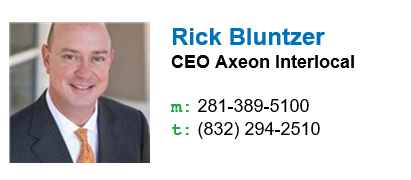PUCT and ERCOT Taking Action to Improve Texas Reliability

Last year, Texas Legislature, the Public Utility Commission of Texas (PUCT), and the Electric Reliability Council of Texas (ERCOT) spent countless hours assessing the market and its strengths and where it exhibited vulnerabilities. The year 2022 is going to be devoted to executing the directives that the Legislature has provided.
On December 16, the PUCT approved the first phase of sweeping market design changes within ERCOT that regulators hope will enhance electricity reliability and the resiliency of the grid.
What spurred this change in the market design that has been a national example for innovation and low-cost electricity for the last 20 years?
Anyone living in Texas last year remembers winter storm URI that took place in mid-February of 2021. That catastrophic storm caused hundreds of deaths, power outages for 4 million ERCOT customers, and between $80 to $340 billion in economic costs and damage, forever changing the electric landscape in Texas.
In 2021, Texas Legislature directed the PUCT to develop and implement reliability measures that will help ensure our power industry can withstand an extreme storm so that we will never again experience the damage to life and property that happened in February.
The Legislature worked hard to fashion a bill that would give direction to the PUCT and ERCOT. Following the bill’s passage and signing by Governor Abbott, the PUCT went to work. The culmination of that work through the Summer and Fall of 2021 was the December 16th unanimous ruling by the PUCT. Highlights of the changes to come include:
• Effective January 1, the PUC lowered the systemwide offer cap which typically is in effect throughout the year from $9,000 a megawatt-hour to $5,000 a Megawatt hour
• Raised the minimum contingency level from 2,300 to 3,000 MW. In other words, the minimum amount of generation that will trigger the high price offer cap to go into effect
• Changed the market rules to improve price signals for load managed resources
• Set higher energy efficiency standards or minimums
• Allowed the deployment of ERS or Emergency Response Services, which enables power consumers to be paid if they shut down in a power emergency
• Implement a fast frequency response ancillary service
“Phase Two” market changes were outlined by the PUCT on December 16th. The Chairman of the PUCT specifically directed ERCOT to work with the PUCT staff to identify and articulate specifications, decision points, and other relevant metrics needed to develop the programs described in the blueprint. Some changes more directly impact load-serving entities like retail electric providers, municipal utilities, and electric coops around the state. The programs described are as follows:
• “A load-side reliability mechanism, through which load-serving entities (Retail electric provider, municipal providers, coops and municipal utilities) would be obligated to procure commitments for sufficient capacity to serve forecast peak load”
• A “Dispatchable energy credits program” through which load-serving entities would be required to obtain sufficient dispatchable capacity to meet net peak load during the future period. The idea is that it is not just the generating companies, but also the load must now be a more active participant in a reliability solution in Texas
• They also directed ERCOT to implement “Backstop Reliability Service” which is anticipated to be an ancillary service to meet specific reliability needs not met by ERCOT’s real-time and ancillary service markets
These changes may seem obscure to most of us who don’t follow the everyday happenings of the electric power market in Texas, but change is in the air, and revenue streams and risks are being reallocated differently among stakeholders. Moreover, with new directives for energy reliability comes anticipated higher prices on your monthly electric bills. It is critical to stay up to date and aware of all these changes in the power market to help ensure your costs are mitigated.

